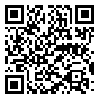Accepted article
Back to the articles list |
Back to browse issues page
1- Social Determinants of Health Research Center, Guilan University of Medical Sciences, Rasht, Iran
2- Social Determinants of Health Research Center, University of Social Welfare and Rehabilitation Sciences, Tehran, Iran
3- Knowledge Utilization Research Center, University Research & Development Center, Tehran University of Medical Sciences, Tehran, Iran
2- Social Determinants of Health Research Center, University of Social Welfare and Rehabilitation Sciences, Tehran, Iran
3- Knowledge Utilization Research Center, University Research & Development Center, Tehran University of Medical Sciences, Tehran, Iran
Abstract: (649 Views)
Objective: In this study, we examined the disparities in access to rehabilitation services for people with disability (PWD) in Iran.
Methods: We performed a secondary analysis of the 2019 Iran Access to Physical Rehabilitation Services Survey, analyzing data from 2146 PWD nationwide. The selected variables included gender, marital status, literacy, employment status, type of rehabilitation service, Deprivation of Access to Rehabilitation Services (DARS), and Activity of Daily Living (ADL). To investigate inequality, we utilized the GINI index, Lorenz curve, and concentration index (CI), with data analysis conducted using STATA SE V 13.1.
Results: The GINI index for DARS was 0.423 (±0.003). The highest GINI index was observed in the transport dimension at 0.551 (±0.003), while the lowest was associated with affordability at 0.499 (±0.003). The CI for DARS was -0.062 (±0.008), indicating that PWD with lower ADL scores had more deprivation in access to rehabilitation services. Considering the wealth index as the ranking variable, the CI for the score of DARS was -0.100 (±0.010), showing better access to rehabilitation services for PWD with better socioeconomic status. The CI was higher for orthotics and prosthetics services (-0.131, ±0.027), indicating that the inequity of accessibility was higher in this type of rehabilitation services. The inequity of accessibility was higher among males (-0.117, ±0.014). Regarding wealth coefficient, PWD who were rich (coefficient= -2.14, 95% CI=-2.68 to -1.59), younger (coefficient= -0.08, 95% CI=-0.77 to -0.32), and had lower ADL score (coefficient= -0.55, 95% CI=-0.77 to -0.32) had less DARS scores. PWD with high school degree (coefficient=3.54, 95 CI= 0.69 to 6.39) and those without health insurance coverage (Coefficient=3.42, 95% CI= 1.32 to 5.51) had more DARS scores.
Discussion: Despite recent efforts to enhance equity in health access, disability continues to present an additional barrier to accessing healthcare in Iran. Targeted policies and interventions that meet the needs for equality of PWD are advisable, including establishing a national registry or database system for PWD, expanding the effective coverage of PWD and rehabilitation service coverage, enhancing service accessibility, and implementing educational initiatives that improve health literacy among PWD.
Methods: We performed a secondary analysis of the 2019 Iran Access to Physical Rehabilitation Services Survey, analyzing data from 2146 PWD nationwide. The selected variables included gender, marital status, literacy, employment status, type of rehabilitation service, Deprivation of Access to Rehabilitation Services (DARS), and Activity of Daily Living (ADL). To investigate inequality, we utilized the GINI index, Lorenz curve, and concentration index (CI), with data analysis conducted using STATA SE V 13.1.
Results: The GINI index for DARS was 0.423 (±0.003). The highest GINI index was observed in the transport dimension at 0.551 (±0.003), while the lowest was associated with affordability at 0.499 (±0.003). The CI for DARS was -0.062 (±0.008), indicating that PWD with lower ADL scores had more deprivation in access to rehabilitation services. Considering the wealth index as the ranking variable, the CI for the score of DARS was -0.100 (±0.010), showing better access to rehabilitation services for PWD with better socioeconomic status. The CI was higher for orthotics and prosthetics services (-0.131, ±0.027), indicating that the inequity of accessibility was higher in this type of rehabilitation services. The inequity of accessibility was higher among males (-0.117, ±0.014). Regarding wealth coefficient, PWD who were rich (coefficient= -2.14, 95% CI=-2.68 to -1.59), younger (coefficient= -0.08, 95% CI=-0.77 to -0.32), and had lower ADL score (coefficient= -0.55, 95% CI=-0.77 to -0.32) had less DARS scores. PWD with high school degree (coefficient=3.54, 95 CI= 0.69 to 6.39) and those without health insurance coverage (Coefficient=3.42, 95% CI= 1.32 to 5.51) had more DARS scores.
Discussion: Despite recent efforts to enhance equity in health access, disability continues to present an additional barrier to accessing healthcare in Iran. Targeted policies and interventions that meet the needs for equality of PWD are advisable, including establishing a national registry or database system for PWD, expanding the effective coverage of PWD and rehabilitation service coverage, enhancing service accessibility, and implementing educational initiatives that improve health literacy among PWD.
Article type: Original Research Articles |
Subject:
Rehabilitation Management
Received: 2024/02/28 | Accepted: 2024/08/31
Received: 2024/02/28 | Accepted: 2024/08/31
Send email to the article author





